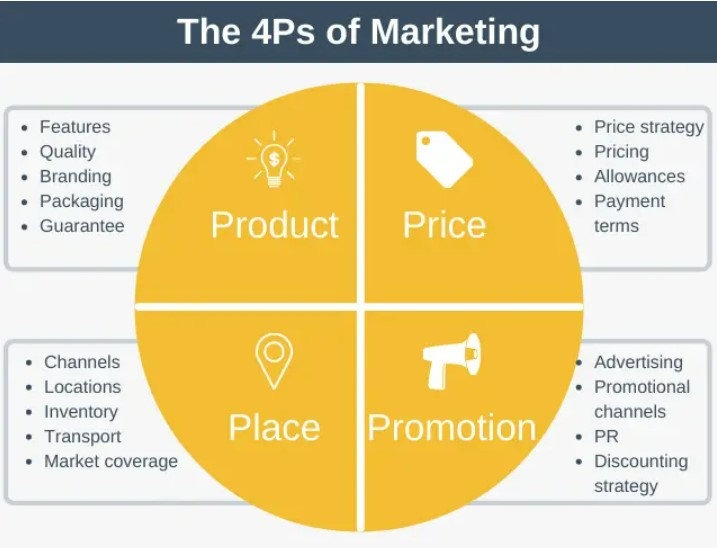
The 4 Ps of digital marketing
- Product
- Price
- Place
- Promotion
There have been quite a few variations on the Ps of marketing, including the 4 Ps and 7 Ps, but for this we focus on the core 4 Ps of marketing – often referred to as the marketing mix. They are product, price, place and promotion. So let’s look at what each of these means and how they apply to digital.
Product
This may be a physical product or it may be your service proposition. The key here is that something is developed that people actually want to buy. Some businesses begin with a product and then try to force that on an audience. If there is no demand for your product and no one is interested then you will not be able to create demand.
What does this mean for digital marketing?
The key considerations here from a digital perspective are around whether your product can/will sell online. What channels are open to you for your product or proposition? Are there opportunities to make it flexible to be more appropriate for the online or mobile audiences? Does it provide real value for the consumer and is it differentiated from your competitor offerings? Is it being updated, serviced, maintained effectively to keep it strong? Are there features of it that can be added or should be excluded for the digital customer and is it fair to do this?
An example might be a music album. Three people buy an album. John buys a CD, Maria downloads the album and Robin streams it. All are different consumer behaviours and each person will use your music in a different way. John may proudly display the album on a shelf as he is a loyal fan. Maria may delete some other music from her phone to free up space for the new album. Robin may put the tracks into separate playlists in order to cultivate his collection according to genre or mood. Understanding the different motivations and usage habits for these products is vital to getting your marketing right in the digital age.
Price
Pricing is the second P and one that can be more of a science than an art. Understanding price elasticity and competitive positioning are angles to consider but we won’t go into the economics of this here – the key factor is whether you are asking for a price that people are willing to pay. The ‘willing to pay’ element of that does of course have many factors behind it such as your brand value, online reviews, product quality and others but there are also numerous tactics that can be employed here.
What does this mean for digital marketing?
Discounts and offers are certainly not new to digital marketing but the concept of fast price comparison and the introduction of cashback and voucher sites have certainly changed consumer behaviors. Businesses can take advantage of this through affiliate marketing programmes. Affiliate marketing is where you promote your products through a third-party website in exchange for paying a commission or fee to the website when an action is taken. This is very common in the comparison, voucher and cashback space as it is very easy to directly track sales and therefore attribute value to the relationship. Commissions are often paid on sales but can be paid on click-throughs or other actions.
Place
Location, location, location. Building your shop in the wrong place decreases footfall and ultimately means fewer sales. Having your shop in the right place but not having the stock in the shop is even worse. Having your product in the shop in the right location but then not displaying it correctly – so people cannot find it – is also a factor of ‘place’.
What does this mean for digital marketing?
All of these apply to digital marketing. You may not have a physical shop but your online shop must be easy to find – this relates back to SEO, paid search and most other digital acquisition channels. Once someone arrives is it easy to navigate and find the information and products that they want? Do you have the items in stock and is your site working correctly to dispatch them? Ultimately, if people cannot find what they are looking for then you can expect them to go elsewhere. If this happens online then you can expect them to go elsewhere much faster as speed is much more of an expectation online.
Promotion
Promotion is what most people think of when they hear the word marketing. Your TV campaign, your press advertising, your display banners. This is often the first time that people will have any relationship with your brand and sometimes, certainly in below-the-line marketing, this can be a personal relationship. As we all know, first impressions are very important so getting your promotion right is vital.